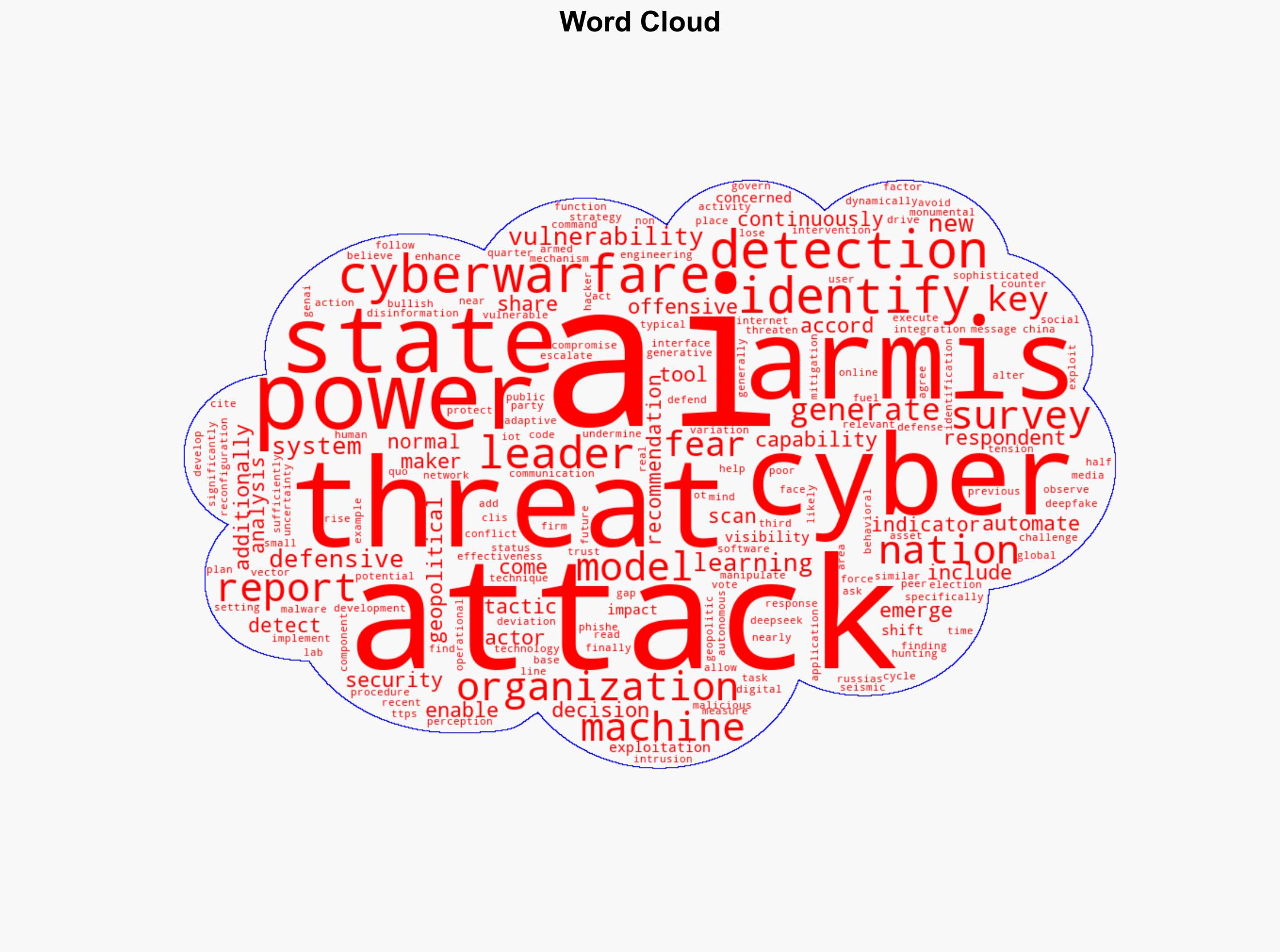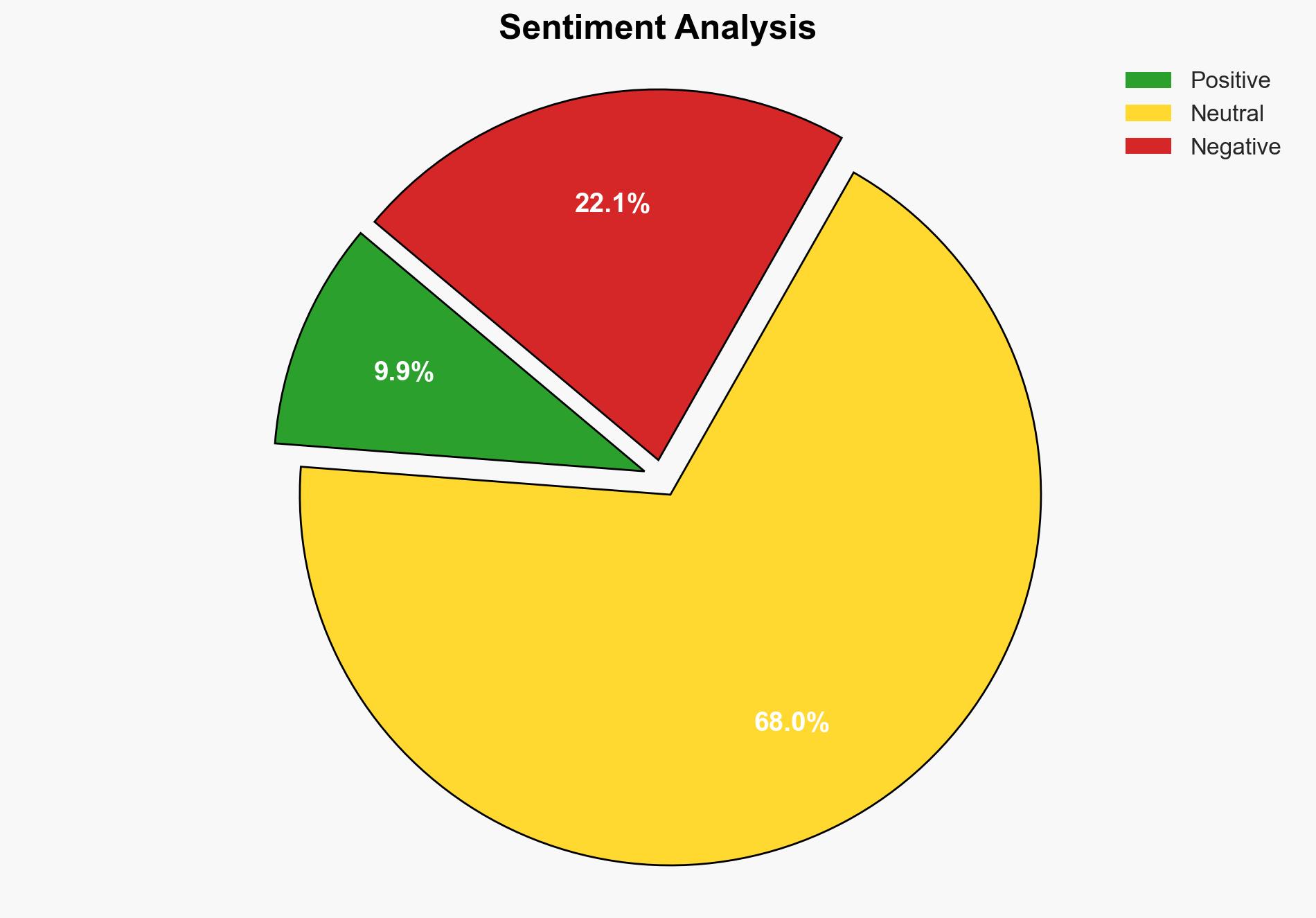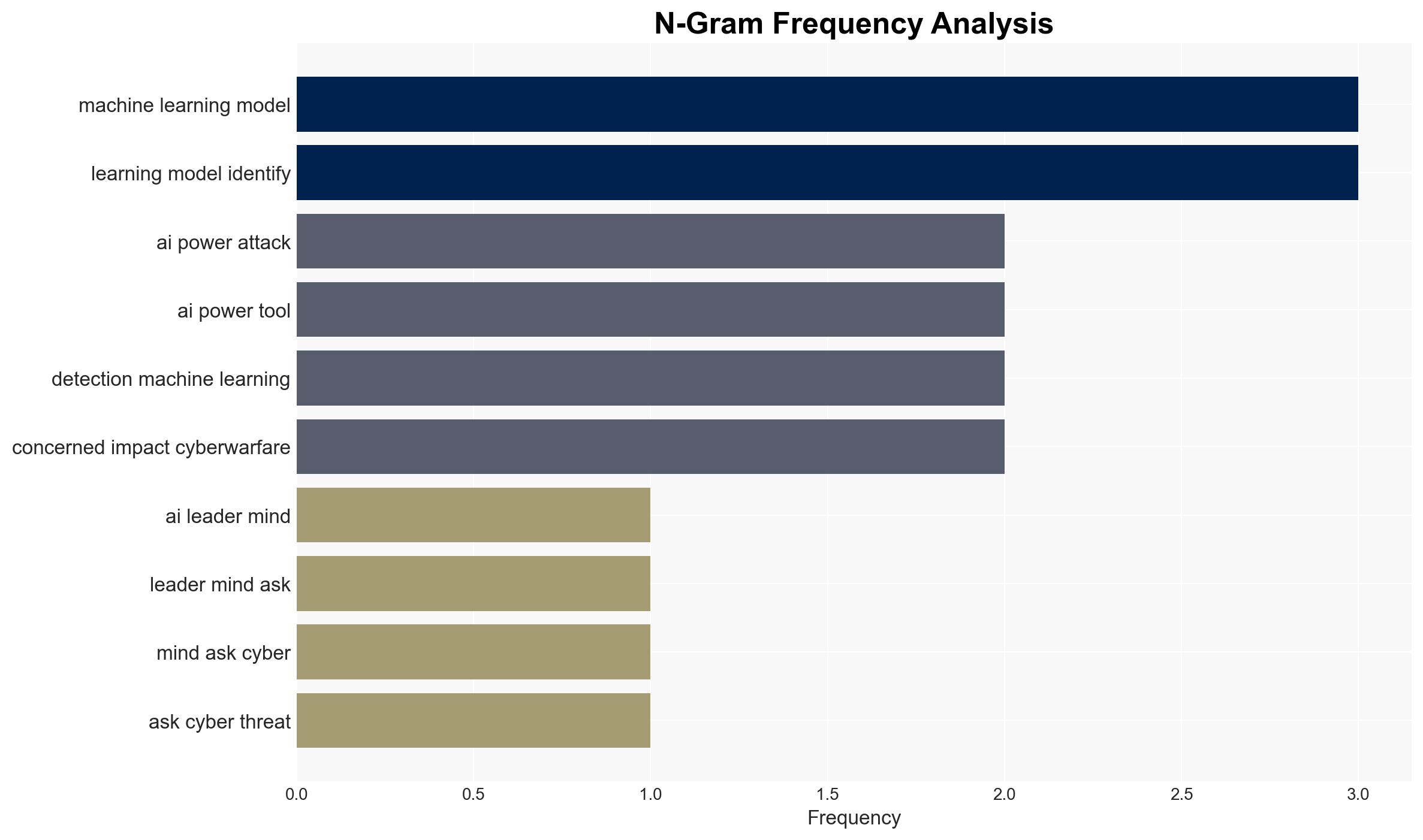Three-Quarters of IT Leaders Fear Nation-State AI Cyber Threats – Infosecurity Magazine
Published on: 2025-04-09
Intelligence Report: Three-Quarters of IT Leaders Fear Nation-State AI Cyber Threats – Infosecurity Magazine
1. BLUF (Bottom Line Up Front)
A recent survey by Armis reveals that 74% of IT leaders perceive AI-powered cyber threats as a significant risk to their organizations. Specifically, 73% fear nation-state hackers leveraging AI for sophisticated attacks. The report highlights the integration of AI in cyberwarfare by countries like Russia and China. Despite these concerns, 77% of organizations have implemented measures to counter AI threats. The strategic focus should be on enhancing AI defensive capabilities while monitoring nation-state activities.
2. Detailed Analysis
The following structured analytic techniques have been applied for this analysis:
General Analysis
The Armis Cyberwarfare Report underscores the growing threat of AI in cyber operations, with nation-states like Russia and China at the forefront. AI’s role in automated malware development, AI-driven phishing, and deepfake disinformation poses significant challenges. The report also notes the potential for smaller nations and non-state actors to become near-peer threats due to generative AI. Defensive measures such as behavioral analysis and automated threat hunting are crucial in countering these threats.
3. Implications and Strategic Risks
The integration of AI in cyberwarfare presents several strategic risks:
- National Security: Increased vulnerability to AI-driven attacks targeting critical infrastructure.
- Regional Stability: Potential for AI-enabled cyber conflicts to escalate geopolitical tensions.
- Economic Interests: Disruption of economic activities due to AI-powered cyber intrusions.
The report highlights the need for robust AI defenses to mitigate these risks.
4. Recommendations and Outlook
Recommendations:
- Enhance AI defensive capabilities through investment in advanced threat detection and response technologies.
- Implement regulatory frameworks to govern the use of AI in cyber operations.
- Foster international cooperation to address the proliferation of AI in cyberwarfare.
Outlook:
Best-case scenario: Effective international collaboration leads to the establishment of norms and regulations for AI use in cyber operations, reducing the threat landscape.
Worst-case scenario: Escalation of AI-driven cyber conflicts results in significant disruptions to global security and economic stability.
Most likely scenario: Continued advancements in AI defenses help mitigate some risks, but the threat from nation-state actors remains persistent.
5. Key Individuals and Entities
The report references significant entities such as Armis, Russia, and China. These entities are pivotal in the context of AI-driven cyber threats and defenses.





